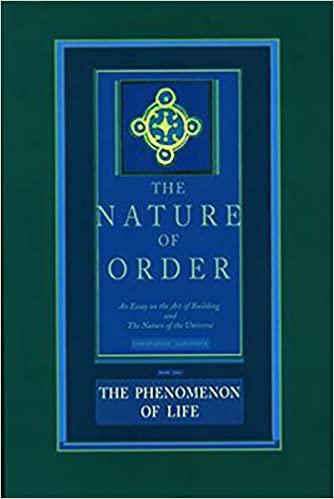
For some time now I have been reading, a page or two at a time, Christopher Alexander's four volume work The Nature of Order: An Essay on the Art of Building and the Nature of the Universe, which is marvelous, idiosyncratic, visionary, and practical, the product of deep collaborative experience and a free mind.
The third and fourth volumes are more focused on architecture, which is Alexander's field. Not being an architect, I discovered that one way to regain my concentration/curiosity when reading his description and analysis of the process followed in contracting and carrying out particular building projects is to imagine that he is describing the process of organizing a cooperative, or some other social movement-building project. I can then see how the deep patterns and principles are relevant to the work.
So here's a passage from Vol 3, Chapter 5, p154, re-written to be about organizing movement projects. I find it very meaningful. It reminds me of how Luis Razeto decribes the process of organizing a solidarity enterprise.
"2 EVERY ORGANIZATION IS PLACED AND SHAPED TO FORM A POSITIVE PATTERN OF RELATIONS
Consider what it means to create organizations according to the fundamental process [described in vols 1 and 2]. It means simply that each act of organizing -- every single act of organizing -- has a positive effect on its surroundings. It completes the movements and communities of which it is a part, preserves their structure, makes them deeper, makes them better, by creating strong centers in them and next to them.
When this is done right it means that each new organization will be a good neighbor. Instead of harming its surrounding organizations, as so many organizations do today, instead of standing alone in precious isolation, each new organization fits into its context, makes the larger movement more profound, enlarges it in spirit. Each organization -- especially in its position, its location, its volume, and in the external spaces it creates -- will be shaped to protect its neighboring community, to extend and improve the commons, in conjunction with other organizations.
The effect is that each organization enlivens and intensifies the movement. The movement -- its valleys, ridges, slopes, its stands of trees, its lanes, its ponds, its pathways, its conformation and resources -- is improved, made more solid, given a more living structure."

Comments
Jasmine Ibe
January 4, 2023, 4:49 pm
Awesome J-O-B! Your modification of the passage definitely resonates with me in-terms of tapping into my interest/ passion. The essence to the main idea seemed to jump off the page. Thank you for sharing!
D Rossing
August 29, 2024, 1:38 am
Hey Matt, Thank you for drawing attention to Christopher Alexander’s compositions of creativity and inspiration! I agree, the Nature of Order is indeed companionable with aspects of honest, iterative growth proper to Cooperativism. Ultimately, a defense of Hope? Perhaps in accord with Ernst Bloch’s “the process is made by those who are made by the process...”? I think your way of reading follows from Alexander’s richly exemplified “phenomenon of life,” once expressed as “a timeless way of building,” and then as a “pattern language,” which can evoke the “quality without a name,” as organic processes of material culture, ongoing care and adaptation, and of love...
Matt Noyes
August 30, 2024, 10:27 pm
Thanks! Yes, I love Ernst Bloch's Principle of Hope, another great big book. Haven't read the Timeless Way yet, but hope to some day.
Add new comment